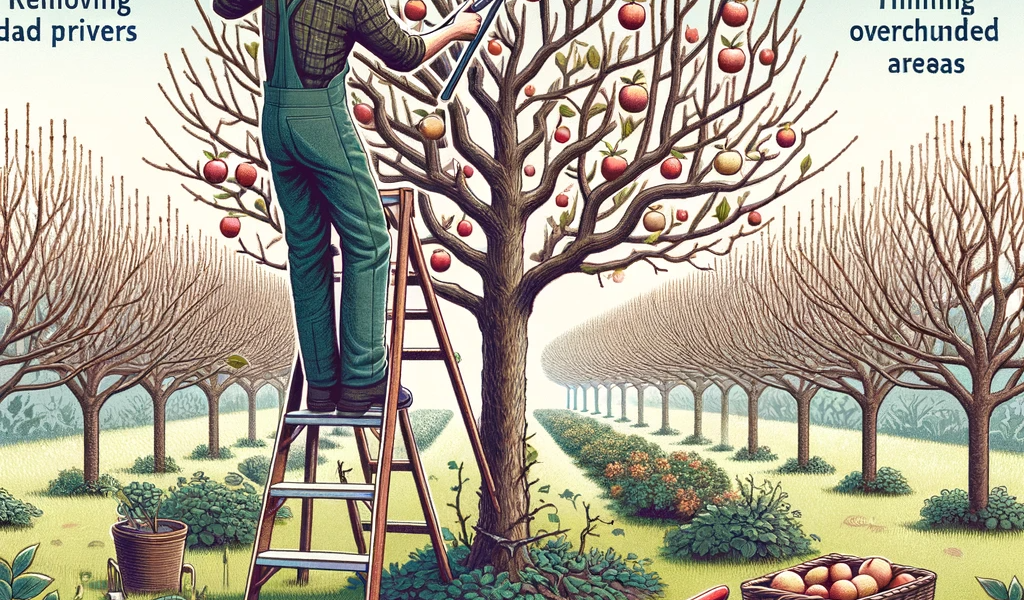
Pruning fruit trees is a vital aspect of their maintenance. It not only shapes the tree and manages its size but also improves the quality and quantity of the fruit harvest. Understanding when and how to prune fruit trees can significantly enhance your gardening success. Here’s a guide to help you get started.

1. Understanding the Purpose of Pruning:
Pruning fruit trees involves removing selected branches or stems to improve the tree’s structure and promote healthy growth. Proper pruning can result in:
- Better sunlight penetration and air circulation.
- Removal of dead or diseased wood.
- Encouragement of fruit-bearing branches.
- Prevention of overcrowding of branches.
2. When to Prune:
The best time to prune fruit trees is during their dormant period, typically in late winter or early spring before new growth starts. Pruning during dormancy minimizes the risk of pest infestations or disease and allows for strong spring growth.

3. Tools for Pruning:
Use sharp, clean pruning tools for clean cuts. Basic tools include:
- Hand pruners for small branches.
- Loppers for medium-sized branches.
- A pruning saw for larger branches.
4. Basic Pruning Steps:
- Start by removing all dead, damaged, or diseased wood.
- Thin out areas where branches are overcrowded, allowing light and air to penetrate the canopy.
- Remove any branches that grow downwards, inwards, or that cross over other branches.
- Cut back the outermost growth of the tree to shape it and control its size.
5. Pruning Young Trees:
For young trees, focus on establishing a strong, well-spaced framework of branches. Remove any competing leader branches and choose 3-5 main branches to form the tree’s structure.

6. Pruning Mature Trees:
Mature fruit trees require regular pruning to remain productive. Remove any suckers and water sprouts that grow from the trunk or from the base of the main branches.
7. How to Make Cuts:
When pruning, make your cuts at a 45-degree angle, about 1/4 inch above a bud or branch. Avoid leaving a large stub, as this can lead to disease.
8. Aftercare:
After pruning, apply a wound dressing to large cuts to protect the tree from diseases and pests. Ensure the tree is well-watered and consider applying a balanced fertilizer to support new growth.

9. Safety First:
Always prioritize safety when pruning. Use proper protective gear and ensure that ladders are stable.

10. Monitoring and Maintenance:
Regularly inspect your fruit trees for any signs of disease or pest issues. Timely intervention can prevent many problems.
In summary, proper pruning is an essential skill for any fruit tree grower. By following these guidelines, you can ensure that your fruit trees remain healthy, structurally sound, and productive. Remember, while pruning may seem daunting at first, with practice, it becomes an intuitive and rewarding part of gardening.
